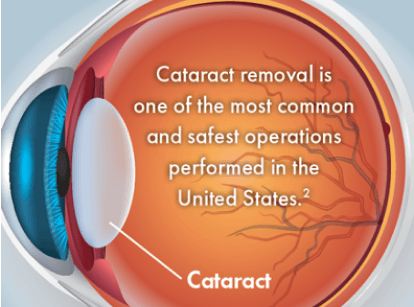About
Cataracts
What are cataracts?
"Cataracts" refers to the clouding of your eye's lens. This happens naturally as you age and can make it harder for you to see. By age 65, 90% of people have cataracts.1
Not all cataracts are the same. Some cataracts are very hard and very cloudy. Other cataracts are softer and less cloudy. No matter the type, cataracts need to be treated when they start affecting your everyday activities like driving, reading, or watching TV.

How are cataracts treated?
To treat and correct cataracts, they must be removed and replaced with an intraocular lens (IOL). Despite common thought, not all cataract surgery is the same. You have options when it comes to choosing a procedure:

Manual Cataract Surgery

Basic Laser Cataract Surgery

Robotic Laser Cataract Surgery
Robotic Laser Cataract Surgery provides unmatched precision for treating your cataracts and astigmatism, if needed, to restore your vision to its full potential.

What happens during cataract surgery?
During cataract surgery, your surgeon will remove your cataract and replace it with an IOL. If you also have a common visual condition called astigmatism, your surgeon can correct this during your cataract procedure.
The type of cataract surgery you choose will affect how precisely each step is performed and may affect your overall visual outcome.
What is astigmatism?
Astigmatism is a highly common condition that happens when the eye is shaped like a football instead of a basketball. Astigmatism affects your near and distance vision, and can cause blurriness or double vision.
If astigmatism is not treated during cataract surgery, you will need to wear glasses or contacts after the procedure.

